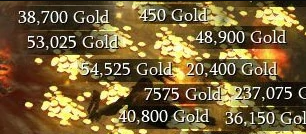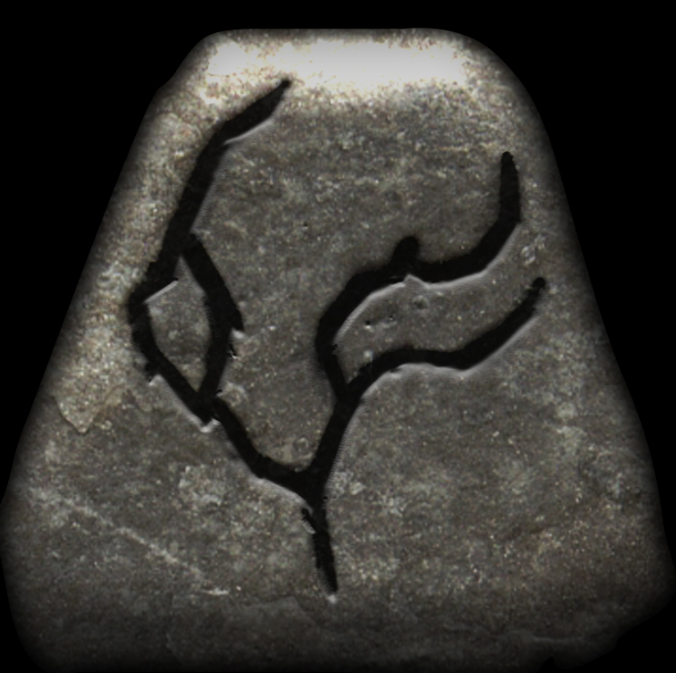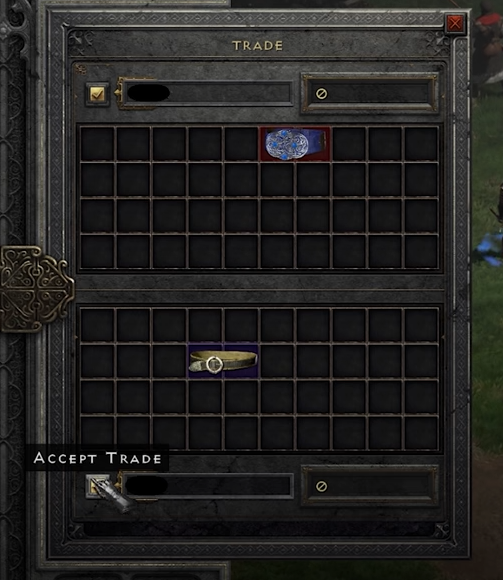So, you want to learn how to trade in Diablo II – Resurrected? This guide will highlight what trading in Diablo II means, how to do it, and what to look out for when you’re trading. Trading in Diablo II resurrected can be pretty overwhelming at first look, from items that are the same but selling for a lot more – to the rune system; it’s no wonder players are left confused. We hope to alleviate those worries and even help clear up that bag space – saving you time and money.
The Currency
In your typical MMO, you can expect to use one common currency to purchase your gear or use it for trading; however, Diablo II has a gold system that is essentially useless for trading. What you instead use for trading is something called “runes.” Before we get ahead of ourselves, let’s go over each one individually so that you can understand it a little better.
Gold as a Currency for Trading
As we briefly mentioned – gold is not used for trading in Diablo II. Instead, gold is used for gambling with traders and buying low-level tier gear. Its limited usage is due to the sheer volume; you get gold by doing everything in the game, and as such, its value on the trade market is not worth the pixels it’s printed on. We will instead look at runes.
Runes as a Currency for Trading
Runes are sought after as they are harder to come by and can create rune words with modifiers applicable to Diablo II builds. When crafting these runes, you essentially roll dice with stats that get modified according to what the rune initially had. For example, if you had a rune with Magic resistances, casting speed, and health, your craft may result in a higher value of either stat. If you roll a perfect number, your rune will be incredibly valuable; however, if your rune rolls low, it won’t be worth all that much.
With all that said, players will only be interested in rune words level 45 or above.
High Rune Values
Each rune has its value initially. You can use three low-level runes of the same quality to combine, while higher-level runes require two of the same quality. The reason you want to combine runes is to gain higher tiers. Below you can see the level and value of runes according to the first high-level rune of value – Ist. This should serve as a basis for trades.
Players will usually trade in High runes, which comprise everything between Ist and Zod.
Rune Word Values
Each rune word has a specific stat which it benefits, but just because some stat may have rolled perfectly, it doesn’t mean that your runes will have much value in trade. Let’s break that down real quick:
Let’s bring up a spirit word rune, for example; there are three modifies when used on a shield, and those are:
- Faster Cast Rate 25% – 35%
- Mana 89 – 112
- Magic Absorb 3 – 8
As you can see, we used the values that it could roll as either 25% through 35% or 89 through 112, etc. These rolls are randomized and are the luck of the draw. Each stat will have its value; however, even if you rolled 112 mana and 8 magic absorbs but 25% Faster Cast Rate the value will not increase – that is because the best stat is Faster Cast Rate and is more sought after by players.
Each rune word has increased value according to the most prioritized stat being rolled high. There is a list here which you can use for reference per what stat is best for which word (higher value)
Equipment and Hoarding
Hoarding in video games is a common phenomenon because players don’t know the value of items held. They clutter your inventory and cause headaches in inventory management. Get rid of those worries by looking at the values of D2R items for what is considered rare, common, and worthless. You can use the search function for each item and consider whether it is worth keeping or discarding. When selling items, see if you rolled perfectly for the piece of gear you received from a boss or mob; most items will be helpful for each different build out there and can net you a fair price.
On the same note, inventory can get excessively cluttered and, as a result, will be unable to hold more items. Most players will use what is known as a mule, which is a level 1 character that holds all other items from your main character.
Most Sought After Items
Even though many items vary in terms of price and valuation, there are a few that are guaranteed sellers; these are:
- Gems – Perfect Gems (40 per Ist rune) (general rule of thumb)
- Lower tier Runes – Stack of 20 per Ist Rune
- Jewels – Similar to gems (40 per Ist Rune) (general rule of thumb)
- Uber Keys – Set (3 of the same key) Can net you 1 Ist
- Essences (used for respecing)
These items listed above make trading more accessible and less of a headache for new players, and we highly recommend using this to engage in the trading market.
Rapid Fire Tips for Trading
Seasons – Take Advantage of Early and Late Selling
In any capitalist society, we can see different prices. Demand changes in Diablo II based on the current time of the season and the value of items. Equipment for builds will sell a lot early in the season but will drop dramatically near the end. Runes will increase in value towards the end; keep this in mind when selling your gear and runes. We recommend buying runes early on in a season and selling them towards the end of a season.
Only Trade with Trustworthy players – Beware of Scams.
Many players have been scammed by others when trading – beware of this and always make sure the item you want is being traded in the trade window (see below). Once you are happy with the item, confirm the trade.
Summary
If you wish to make trading easy, check out our SSEGold for great deals on in-game items, runes, essences, and other valuable items. While you’re here, check out our excellent guides for builds and guides. As always, Happy Trading!





